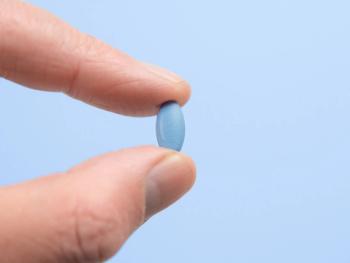
Differential Diagnosis of Mixed States is Nearly Impossible. Here’s How to Cope.
Key Takeaways
- Bipolar mixed states share symptoms with depression comorbid with PTSD, GAD, or ADD, complicating differential diagnosis.
- The DSM-5's mixed features specifier broadens the bipolar spectrum, increasing symptom overlap with other conditions.
How can you distinguish bipolar mixed states? Stay tuned in this short series.
This first of 3 articles will demonstrate that bipolar mixed states are nearly impossible to differentiate from depression that is comorbid with
The Mixed Features Specifier
In 2013, the DSM-5 extended the bipolar spectrum all the way to “unipolar” (
Which Symptoms?
In the words of some of the of the DSM-5 crafters: “The mixed features specifier, it was decided, would define clinical entities … that merited clear and more precise definition—especially in order to establish clear entities for future outcome studies.”1 [emphasis mine] In other words, the new criteria were more a research guideline than a clinical guideline.
This helps explain the exclusion of some of the high-energy symptoms commonly observed in research on mixed states since 2013. According to three such studies,2-4 common symptoms of mixed states include:
- Agitation, both psychic (anxiety) and physical
- Irritability
- Nonstop ideas and distractibility
- Decreased sleep
Roger McIntyre, coauthor of one of those studies4 suggests these be remembered as “The 4 A’s”: anxiety, anger, agitation and attention problems. (Evidently including insomnia would ruin a good acronym).
How Many?
Three treatment guidelines for mixed states published since 2017 suggest that any admixture of manic and depressive symptoms is possible.5-7 This dimensional view is shown in the
In this view, there is no lower limit on the number of manic symptoms necessary to make an otherwise “unipolar” depression a mixed depression. This compounds the problem that the DSM-5 authors were trying to avoid: overlapping symptoms.
Overlap With Common Conditions
Several common conditions share nearly every symptom with bipolar mixed states, when the latter are defined as including the 4 A’s. These include depression with PTSD, GAD, or ADD, and borderline personality disorder. This overlap is shown in the
Because of this overlap, differentiating these conditions based on symptoms alone is nearly impossible. Even supplementing symptom findings with family, social, and past psychiatric history may not help much. Trauma histories are unfortunately common across all 4 conditions. Family histories can be helpful but are often uncertain. Illness course is obviously limited in young patients. Response to previous treatments may be illuminating, but you might be the first provider.
Is this “farewell to differential diagnosis,” as one author lamented?9 Not necessarily; rather, one can simply acknowledge that diagnostic certainty is almost impossible to attain in the face of depression with anxiety or anger or agitation or attention problems. When dealing with these symptoms, one must think of diagnoses in this context as tentative, holding open the possibility of alternative explanations until a good outcome is obtained.
Coping With Diagnostic Uncertainty
Here are 4 steps to take or consider before initiating treatment that can help manage diagnostic uncertainty.
1. Routinely gather data that differentiate bipolar and unipolar depressions: family history, age of onset of depression, illness course (episodic or postpartum), and response to treatment (especially adverse responses to antidepressants).
2. Engage the patient (and perhaps family) in shared decision-making through psychoeducation. Help them understand that the possibility of bipolar should be approached not as a categorical yes-or-no but dimensionally, as in “how much bipolarity might you have, if any?”
3. Consider beginning with psychotherapy. If you do not offer psychotherapy yourself and cannot easily refer for it, there are now inexpensive digital therapies for depression, PTSD, anxiety, and ADD. There is also a simple initial behavioral therapy for bipolarity, social rhythm therapy.
4. Compare treatments. If diagnostic uncertainty is high, then predicting treatment responses will be uncertain as well. But treatment risks are more predictable. For example, though it may not be clear if a patient has a truly unipolar depression or a bipolar depression, the risks of antidepressants and lamotrigine are both relevant to an initial treatment decision.
More on each of these approaches follows in Part 2, including practical clinical tools for each.
Dr Phelps is retiring from 30 years of treating complex mood disorders, and recently founded another website, DepressionEducation.org. He is the bipolar disorder section editor for Psychiatric Times® and the author of
References
1. Ostacher MJ, Suppes T.
2. Perugi G, Angst J, Azorin JM, et al; BRIDGE-II-Mix Study Group.
3. Sani G, Vöhringer PA, Napoletano F, et al.
4. Suppes T, Eberhard J, Lemming O, et al.
5. Yatham LN, Chakrabarty T, Bond DJ, et al.
6. Stahl SM, Morrissette DA, Faedda G, et al.
7. Malhi GS, Bell E, Bassett D, et al.
8. McElroy SL, Keck PE.
9. Goldberg JF.
Newsletter
Receive trusted psychiatric news, expert analysis, and clinical insights — subscribe today to support your practice and your patients.














